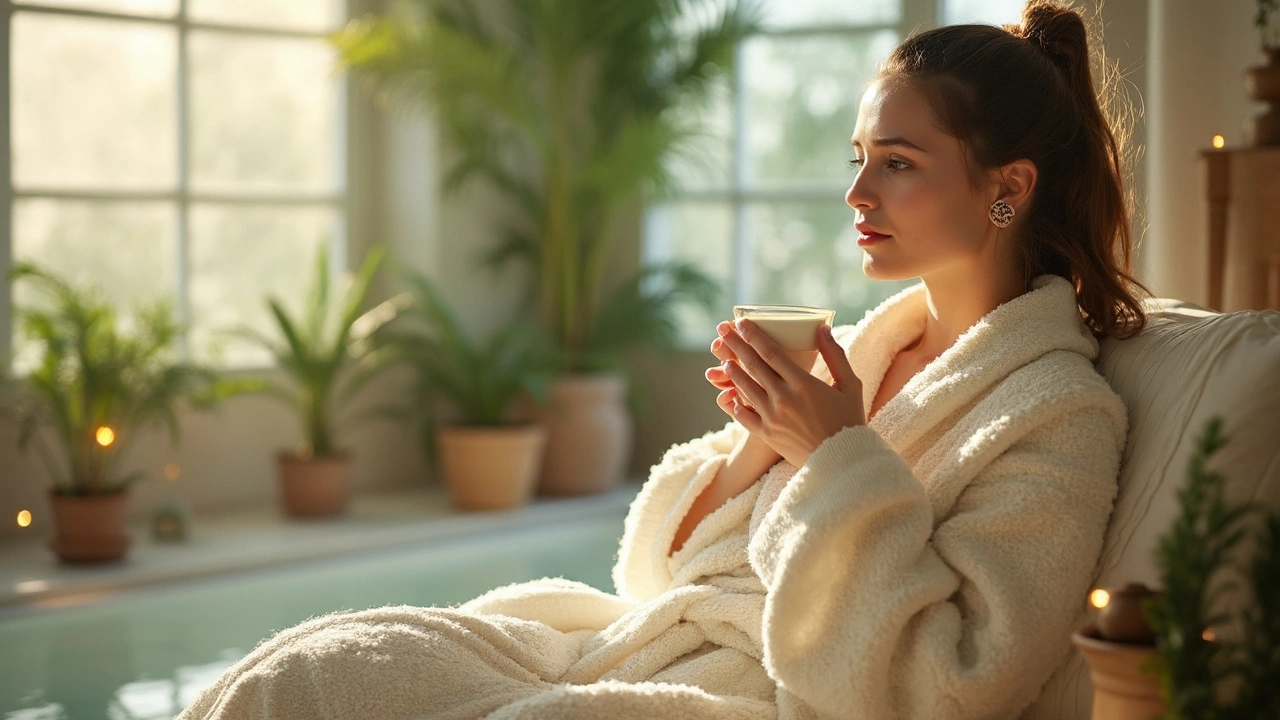Ultimate Foot Massage Guide: Techniques, Benefits, and How to Book in 2025

Key Points – What To Know First
- Foot massage isn’t just about pampering—it can improve circulation, reduce pain, and lower stress.
- You don’t need fancy tools; hands and a little know-how can work wonders at home.
- Various foot massage services exist, from reflexology to deep-tissue options at local spas.
- Sessions usually take 30 to 60 minutes, often with comfy chairs, calming scents, and a soothing vibe.
- Safety matters: check for cleanliness, trained staff, and discuss health issues before booking.
Direct Answer – What’s Foot Massage All About?
Foot massage is a hands-on technique that focuses on relaxing and relieving pressure in your feet. It can help with tired muscles, stimulate blood flow, and even affect your whole body thanks to a bunch of nerve endings nestled in your soles. It’s common to mix in reflexology points (areas on your feet that link to organs and systems), but a classic foot massage may simply knead, press, and stretch muscles for relief. Whether you do it yourself, get your partner to help, or visit a certified therapist, a good foot massage can be a daily treat—or the answer when your heels are howling after standing all day.
Comprehensive Guide to Foot Massage: Relax and Rejuvenate
Let’s be honest: we walk, run, and sometimes sprint through our lives, but when’s the last time you thanked your feet? I used to overlook them until my youngest, Jasper, was born—and suddenly, carrying a baby everywhere left my feet screaming by bedtime. One evening, a quick DIY massage with a dab of olive oil turned into my nightly ritual, and my whole mood shifted. Turns out, science backs this up. A 2022 study from the University of Miami showed that a daily 15-minute foot massage for just two weeks significantly reduced anxiety and fatigue in busy parents. That’s not magic, it’s human biology working in your favor.
What makes a foot massage so effective is the sheer number of nerve endings in our soles—around 7,000, for those who love trivia. Each squeeze or gentle press doesn’t just make your feet happy; it actually sends signals through your nervous system, dialing down stress hormones and kicking up endorphins. No wonder some people swear a foot massage rivals a glass of wine after a hard day.
Whether you’re hoping for deep-tissue relief or just need a gentle rub after a day in tight heels, there’s a style for everyone. And no, you don’t need a $300 massage gun or some fancy gadget; your own two hands, a tennis ball, or even a rolling pin from your kitchen can do the trick.
If you prefer the spa life, plenty of salons now offer standalone foot therapy sessions. These are perfect if you’re short on time but crave a little luxury. Some mix in aromatherapy, warm towels, or even herbal soaks—it’s like a mini-vacation without ever leaving the city. Don’t be afraid to ask staff about the oils or lotions used, especially if you have allergies or sensitive skin, as not all products are created equal.
I’ve found that foot massage is also a fantastic bonding tool. My daughter Sylvia and I do five-minute swaps while catching up on her day, and it’s much more meaningful than mindless scrolling. If you’ve never tried a home foot massage, throw on your favorite playlist, grab some lotion, and start with slow, circular movements on the ball of your foot. Gradually press your thumbs down toward your heel, then give each toe a gentle stretch—the feeling is seriously addictive.
Still wondering if foot massage is for you? Ask yourself: do your feet ache by evening? Are you often on the go, or find it hard to unwind? This isn’t luxury, it’s self-care carved out in the space between all your obligations. And that’s something we all deserve.
Definition and Context – What Exactly Is Foot Massage, and Why Care?
Foot massage is an ancient technique—records show the Egyptians practiced it more than 4,000 years ago, believing it could balance energies in the body. Today, you’ll find it everywhere, from doctor’s offices to upscale hotels. But what sets it apart from a regular body massage?
It starts with focus. A foot massage zooms in on the 26 bones, 33 joints, and over 100 muscles, tendons, and ligaments that work overtime every day. Think about standing in line at the grocery store or chasing your toddler in the park. Your feet take the hit, quietly supporting you until something finally gives (hello, sore arches!). Regular attention—through targeted pressure, gentle kneading, and stretches—can ease symptoms tied to flat feet, plantar fasciitis, or even poor sleep.
You’re probably thinking, "Sure, but does it matter for me?" Here’s the catch: almost every major nerve in the body connects to the feet. That’s why reflexology, a cousin to foot massage, believes massaging certain foot zones can help the whole body. Western research is still catching up, but hospitals in Denmark and Sweden already offer reflexology as a comfort therapy for cancer patients. For most of us, it just feels incredibly good, and that alone is reason to give it a try.
Whenever you see "foot therapy" or "reflexology" advertised, check if the practitioner has credentials or training—for example, look for a license from the American Massage Therapy Association (AMTA) if you’re in the US. You can ask if they use specific oils, tools, or stretches, especially if you have medical concerns. I always mention my mild allergies before any treatment, and I’ve never met a therapist who wasn’t happy to adjust their products for my peace of mind.
Benefits of Foot Massage – Why Your Body (and Mind) Will Thank You
Let’s skip the Instagram hype and focus on what’s actually proven. Here’s what happens when you add regular foot massage to your routine:
- Foot massage boosts blood flow. That’s huge for anyone who stands all day or has chilly toes.
- It can cut down on pain, especially from plantar fasciitis, bunions, or arthritis. The American Orthopedic Foot & Ankle Society found that people who massaged their feet daily reported 40% less pain after just one month.
- Stress? Gone. A University of Brighton study in 2023 showed that healthcare workers who got two 10-minute foot massages per week felt less anxious and slept better.
- Swelling and water retention (common for pregnant women) can be eased with strokes that move fluid away from the ankle.
- Improved balance and flexibility. Gabriella, my friend who teaches yoga, swears the only reason she can hold dancer’s pose is that she gets a foot massage twice a week.
How else can foot massage make you feel better? It can lessen headache severity, help you unwind before sleep, and even improve circulation if you have diabetes (just make sure your therapist knows your medical history!). Plus, it’s one of the few self-care rituals that work even when you’re super busy or low-energy.
Here’s a quick stat table from recent clinical trials:
| Benefit | Reported Improvement | Reference Group |
|---|---|---|
| Reduced Foot Pain | 40% in 1 month | Plantar Fasciitis Patients |
| Lower Anxiety | 30% in 2 weeks | Hospital Workers |
| Improved Sleep | 35% longer deep sleep | Chronic Pain Sufferers |
No one-size-fits-all here. Try different techniques or routines until you find what clicks. For some, a nightly five-minute massage does the trick; for others, booking a professional every month is a game-changer.
Types of Foot Massage Available in Your Area
The world of foot massage isn’t one-size-fits-all. Here’s a rundown of options you’re likely to see at local spas or clinics:
- Classic Foot Massage: Simple kneading, rubbing, and pressing with the therapist’s hands. No woo-woo, just skill.
- Reflexology: Focuses on pressure points tied to different organs. If you want something extra, this method feels almost magical. Some believe pressing the big toe can even ease neck pain!
- Hot Stone Foot Massage: Heated stones are moved over the foot to relax muscles. It’s the ultimate in “ahh.”
- Thai Foot Massage: Combines stretching and deep compression. Great for those who want to improve flexibility or spend hours standing.
- Sports Foot Massage: Targets sore or overstressed feet with deeper strokes, usually for athletes or weekend warriors.
- DIY At-Home Massage: Grab a lotion, warm towel, or massage roller. My kids love a quick “spa night” with nothing but socks and tennis balls.
Check with your spa or therapist about what’s available. Most metropolitan areas offer at least three of these, and mobile therapists can even bring the whole setup to your living room.

How to Find Foot Massage Services in Your City
There are more foot massage options these days than latte flavors. If you’re searching online, type in “foot massage” plus your city—keep it simple! Star ratings and reviews are your best friends. Tip: Look for places with at least 4 out of 5 stars and plenty of recent reviews from real people, not bots.
Neighborhoods around shopping districts or near medical centers often have reputable spas or wellness clinics. If you want a visual step-by-step, here’s how I usually do it:
- Fire up Google Maps (or Apple Maps, whatever floats your boat).
- Type “foot massage” or “reflexology spa.”
- Sort by ratings, then scan the highlights for words like “clean,” “professional,” and “friendly.”
- Peek at photos—comfy chairs and subtle lighting usually mean a thoughtful setup.
- Call or check the website for details: treatments offered, staff certifications, and operating hours.
And yes, mobile therapists are rising stars, especially for busy parents like me who can’t always sneak away. Apps like Zeel or Urban (if you’re in the UK) allow booking a licensed pro to come straight to your home. Handy, right?
What to Expect During a Foot Massage Session
Picture this: you walk in, are greeted with a smile, and led to a plush chair or massage table. Soft music plays, and sometimes there’s even a hint of eucalyptus or lavender in the air—bonus points if you can kick back with a cup of herbal tea while waiting.
Most sessions start with a quick wash or wipe, maybe even a warm foot soak for the full spa feeling. Next, your therapist will ask about any pains, past injuries, or preferences. Be honest! If you hate having your toes pulled (raises hand sheepishly), just say so. The actual massage often starts at the toes and moves toward the heel, with a mix of stroking, rubbing, and gentle pressing. In reflexology sessions, the therapist may target specific points; in relaxation massages, it’s more general.
A typical session lasts 30 to 60 minutes, though some places offer power 15-minute fixes for people on the move. Expect a soft towel, sometimes hot stones, and oils or lotions tailored to your skin. If you’re ticklish, let your therapist know—there are ways to adjust pressure so you don’t burst out giggling mid-session!
Good spas or clinics let you relax quietly or chat a little if that’s your style. End with tips for home care, like stretches, recommended oils, or advice on how often to book. Don’t jump straight up—give your body a moment to recalibrate. (Trust me, you’ll want to savor the buzz.)
Pricing and Booking Foot Massage – What It Really Costs
Prices for foot massage sessions can vary a lot based on location and extras. Here’s a quick look:
| Service Type | Average Price (USD) | Duration |
|---|---|---|
| Classic Foot Massage | $30–$50 | 30 min |
| Reflexology | $40–$70 | 45 min |
| Hot Stone Foot Massage | $55–$80 | 60 min |
| In-home Foot Massage | $60–$100 | 60 min |
Booking is pretty straightforward. Most spas now accept online reservations—just choose your service, time, and any special add-ons. Some apps allow you to pick your therapist or set reminders for future visits. If you’re going to a new place, try booking during off-peak hours (midday, early afternoons) for shorter waits and quieter vibes.
Safety Tips – Keep Your Experience Healthy and Happy
Never take safety for granted—your feet carry you everywhere, so treat them well. Here’s your checklist:
- Always check staff certifications, especially for reflexology or medical massage.
- Make sure the spa is visibly clean—hot towels and tools should be sanitized between clients.
- Let your therapist know about foot injuries, infections, or any issues like diabetes. Some conditions need a gentle approach.
- Avoid foot massage if you have open sores, rashes, or suspect a fungal infection. Heal up first!
- Stick to gentle at-home routines if you’re pregnant or have blood clot risks—ask your doctor before deep treatments.
If something feels off during your session (pain, burning, or discomfort), speak up right away. No therapist worth their salt will be offended—you’re the boss of your own feet. Trust your gut, and don’t be shy about saying what works (or doesn’t) for you.
Comparison Table: Foot Massage vs. Pedicure in Local Spas
| Feature | Foot Massage | Pedicure |
|---|---|---|
| Focus | Pain/stress relief, circulation, health | Nail care, aesthetics, light massage |
| Duration | 30–60 min | 30–60 min |
| Techniques | Kneading, pressing, reflexology | Nail trim/shaping, scrub, basic rub |
| Average Price | $30–$80 | $25–$50 |
| Health Benefits | High | Moderate |
FAQ: Your Questions About Foot Massage Answered
Q: How often should I get a foot massage?
A: Most people benefit from once a week, but even a few times a month can make a difference. Daily short massages at home are also great.
Q: Can foot massage help with headaches?
A: Yes! Pressing certain points in the foot (like the space between your big toe and second toe) may help relieve tension headaches, according to acupressure practitioners.
Q: Is it safe if I have diabetes?
A: Foot massage can help circulation, but always tell your therapist, and avoid if you have neuropathy or open sores.
Q: What if I’m super ticklish?
A: Tell your therapist—firmer pressure and slower movements can help a lot. You’ll be surprised at how relaxing it becomes.
Q: Do I need to prepare for a session?
A: Clean feet are appreciated. Wear loose pants that roll up easily, and skip lotions or oils beforehand—your therapist will handle that.

Ready to Treat Your Feet?
If you’ve never tried a foot massage, there’s no better time. Whether you book a soothing spa session or unwind solo at home, your feet—and probably your head—will thank you. Happy relaxing!


